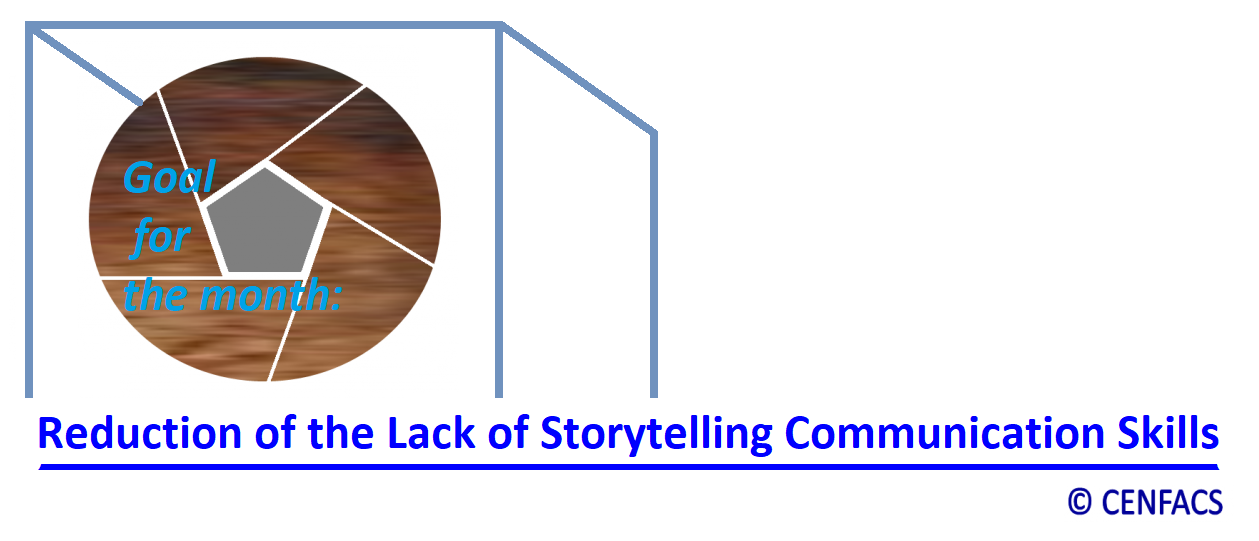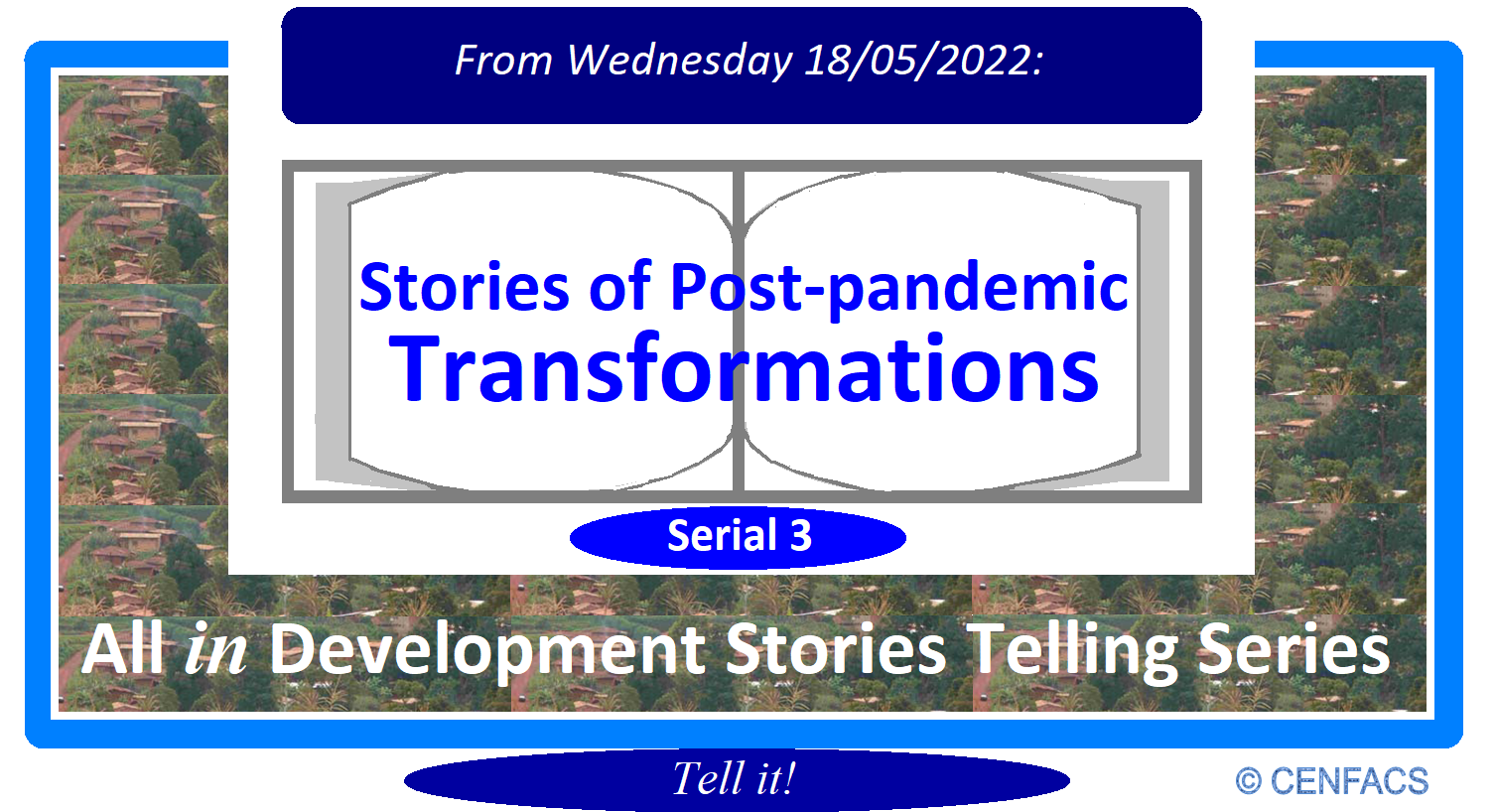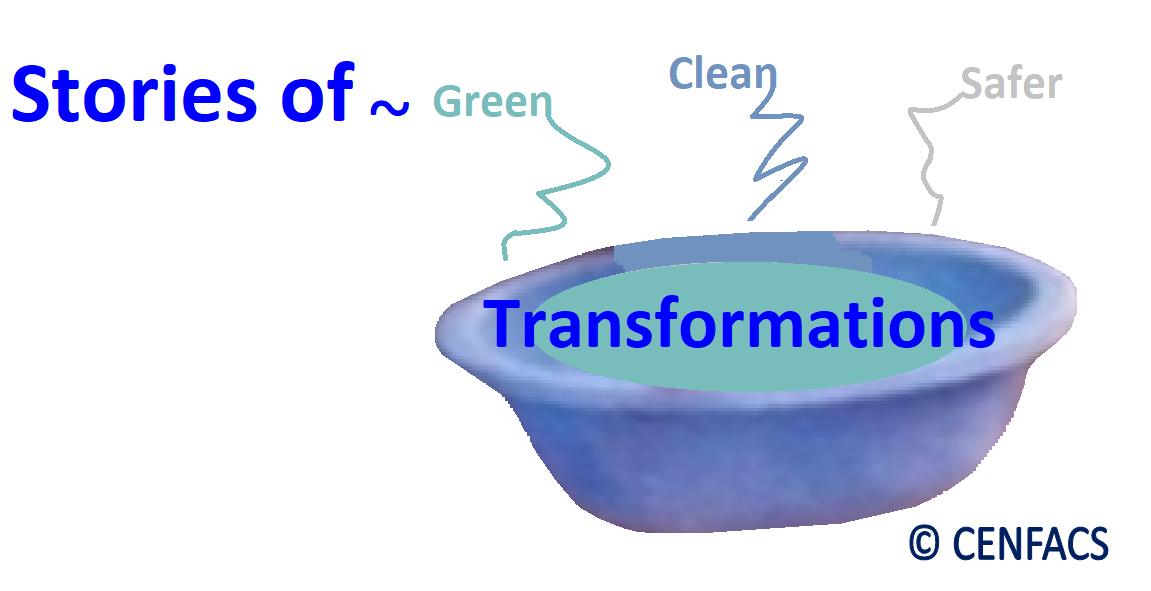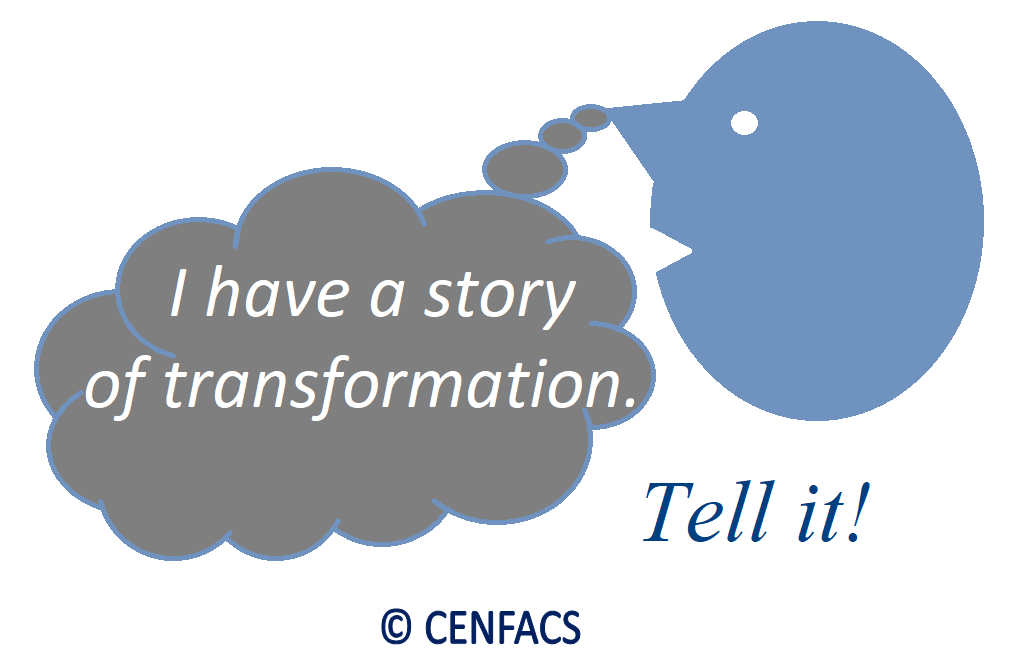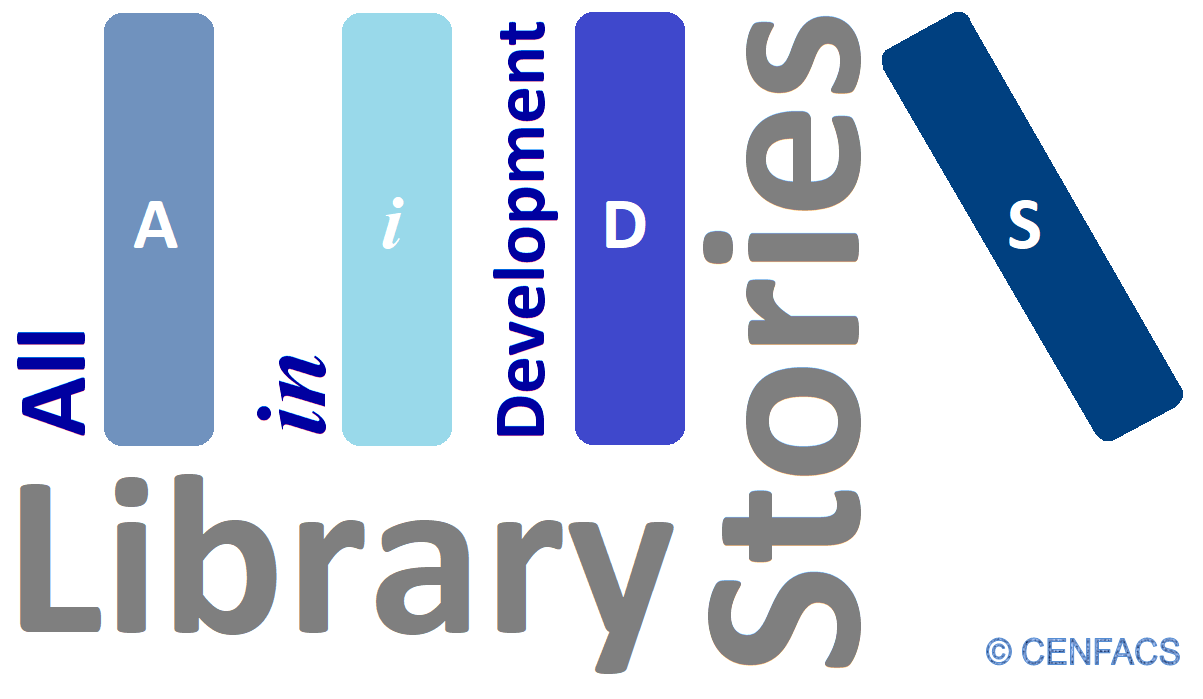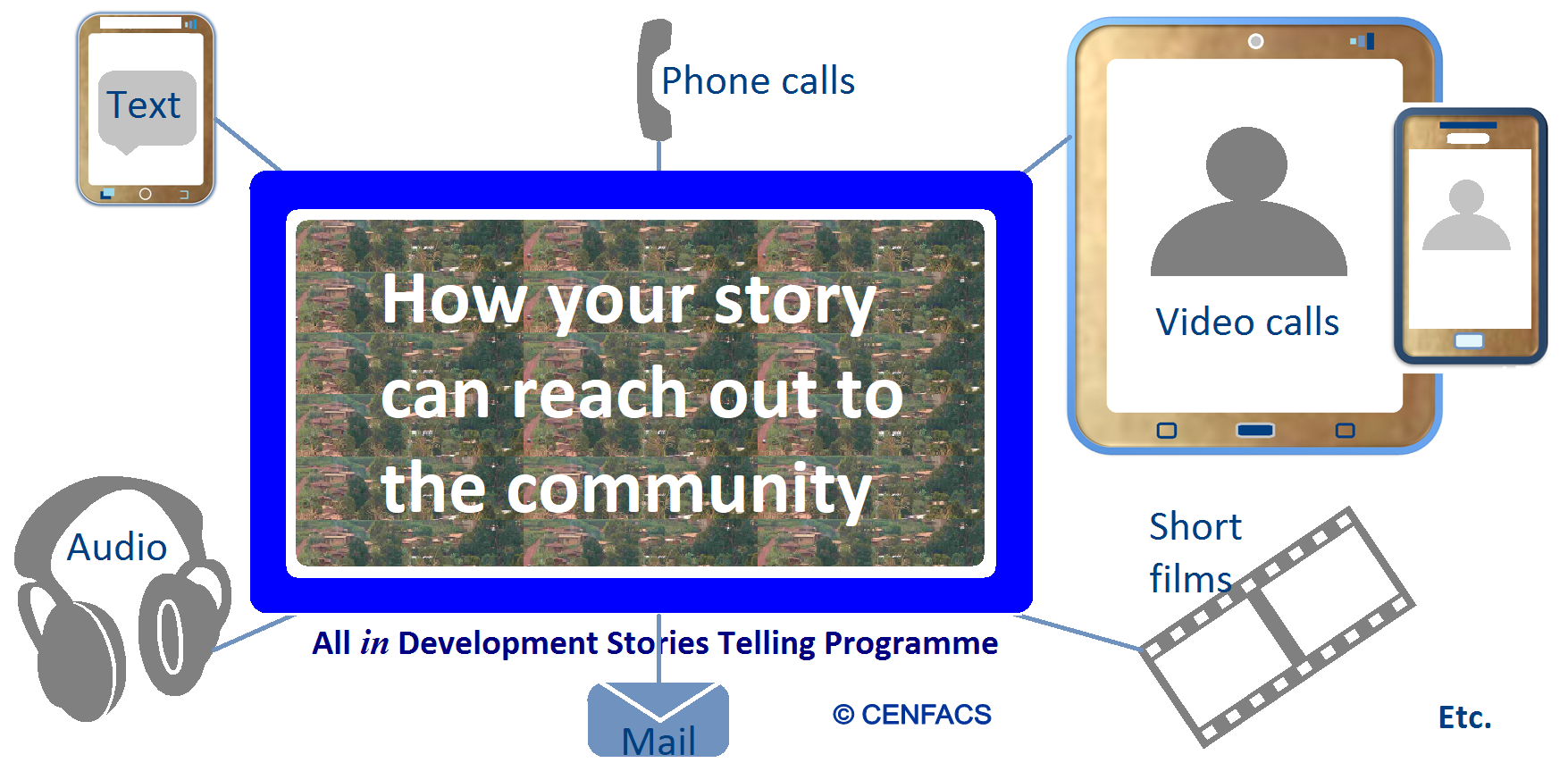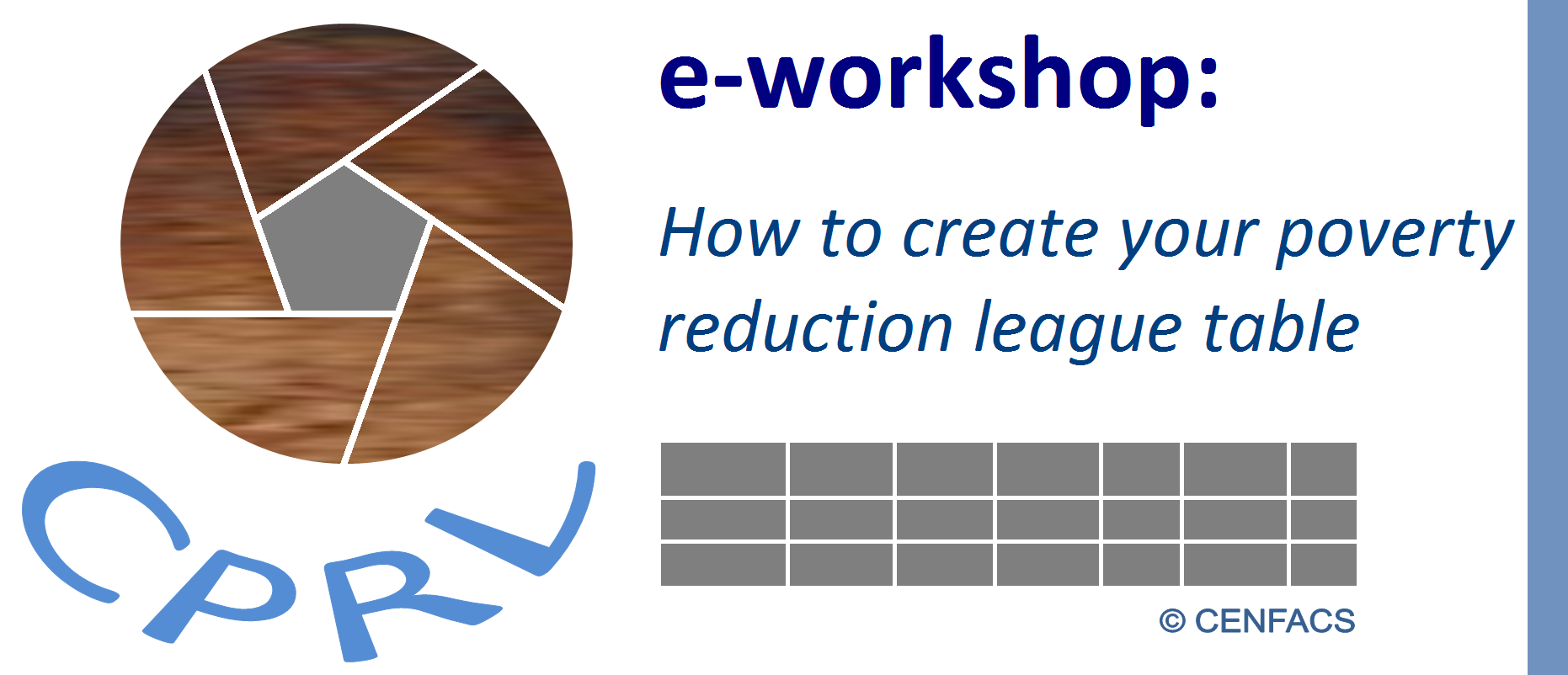Welcome to CENFACS’ Online Diary!
18 May 2022
Post No. 248
The Week’s Contents
• Rebuilding Africa in the Post-pandemic Era
• All in Development Stories Telling Serial 3: Stories of Transformation from the Coronavirus Disaster and its Variants (From Wednesday 18/05/2022)
• CENFACS’ All in Development Stories Library
… And much more!
Key Messages
• Rebuilding Africa in the Post-pandemic Era
As we argued in our previous communications, CENFACS does not only work in bringing and lighting a Blaze of Hope for the victims of destructive wars, natural disasters and other major crises (like the coronavirus shock or the cost-of-living crisis). CENFACS takes the process of working with these victims further in helping them to overcome underlying poverty and hardships induced by these events as well as supporting them to build their future.
CENFACS works with them and or their representative organisations to alleviate poverty and hardships as the lack of hopes and expectations. In the process of relieving poverty as the lack of hopes and expectations, the next step or phase of our advocacy is Rebuilding or Renewing Lives. We call it Rebuilding Africa.
• • Where Rebuilding Africa can take place
Rebuilding Africa can take place in the following types of countries:
√ Countries that are experiencing embryonic democratic transition or want to nurture their democratic transition (like the Democratic Republic of Congo)
√ Countries that came out of destructive natural disasters (for instance Madagascar)
√ Countries that are undergoing peace transition after destructive wars (similar to the current process in the Central African Republic)
√ Countries searching for a truly democratic transition (such as Algeria at the moment).
• • The focus for this year’s Rebuilding Africa
This year, our Rebuilding Africa advocacy will focus on how Africa is trying to recover itself from the coronavirus disaster under the current constraint of another crisis, the cost-of-living crisis. The latter has been caused by a number of factors including the Russian invasion of Ukraine, which has led to rising prices of energy, food, money (interest rates), etc.
Further details about this advocacy work on Rebuilding Africa in the Post-pandemic Era can be found under the Main Development section of this post.
• All in Development Stories Telling Serial 3: Stories of Transformation from the Coronavirus Disaster and its Variants (From Wednesday 18/05/2022)
We are going to start this Serial 3 by asking the following questions:
Has the coronavirus changed people (particularly our users) in their communities and organisations they work with in terms of their habits relating to the non-essential economy or their relationships with the nature? Do people just want to get back on their feet by building back better their life as it was in the pre-pandemic era and keep their relationships with the nature like business as usual?
If people have changed and made the operation of building from the coronavirus not only as a way of getting/building back what was destroyed or lost, but also a process of looking or building forward; then there could be transformation. And if there is transformation, there could be a story to tell and share about this transformation. Stories of transformation can help to know, if not to measure, the change or transformation in the process of building forward better that people are undertaking.
However, before going any further, let us try to understand transformation, define stories of transformation and identify types of transformation stories to submit in the context of CENFACS AiDS Telling and Sharing Programme for this year.
• • Basic understanding of transformation
Our basic understanding of the word ‘transformation’ comes from Chambers’ Combined Dictionary Thesaurus (1), which states that
“Transformation is a change of form, constitution, or substance” (p. 1306)
From this definition of Chambers’ Combined Dictionary Thesaurus, transformation will be here approached from three perspectives, which are: economic, social and environmental.
We are approaching it from these three perspectives because we would like to stay within the spirit of the work CENFACS does in sustainable development. Let us look at each of these perspectives of transformation.
• • • Economic transformation
Economic transformation can be understood in many ways. According to Hidalgo et al (2), economic transformation is
“A process of continuous upgrading of domestic capabilities and type of goods produced”.
As to Page and Shimeles (3), they argue that economic transformation is
“Significant changes in economic structure as factors of production moved from lower – to higher-productivity uses”.
From these economic arguments, our apprehension of economic transformation will be on what happened to people (here our users) and the organisations we work with in terms of economic transformation in the process of building forward better from the coronavirus and its variants. Therefore, the stories we are seeking are those of economic transformation of these people and organisations.
• • • Social transformation
Our selected definition of social transformation stems from the online website ‘igi-global.com’ (4) which states that social transformation is
“The long-term change processes occurred in social norms, levels, and relationships of social structure”
On the same website, it said that
“Social transformation is a process that tends to meaningfully change a specified set of social relations”.
This definition will help to select stories of social transformation amongst our users and organisations working with us. In these stories of transformation, we shall try to find out if there is any sustained process that can enable to identify a defined direction of social transformation.
• • • Environmental transformation
Transformation is perceived here from what Chris Park (5) explains in his Oxford Dictionary of Environment and Conservation, which is:
“Transformation is progressive change that removes evidence of an earlier state, such as the conversion of land from one use to another (such as deforestation)” (p. 457)
This definition will be used to tell and share stories of how people and organisations we work with strive to change their relationships with conditions, factors and influences that affect the life, development and survival of the natural world in which we live.
From these definitions of transformation, one can now try to understand stories of transformation.
• • Stories of Transformation to Build Forward Better
• • • What are Stories of Transformation?
To help some of our readers understand these stories, we would like to refer to what the ‘writepractice.com’ (6) argues about them, which is:
“Transformation stories examine the hero’s process of change as they evolve through the stages of the plot, reacting to events and stimuli, becoming a different person from how they started out”.
To develop stories of transformation, one may find this definition useful or simply operational. One can define their hero in the process of building forward better. They may perhaps have a theory or practice of change that is appropriate for their model or experience of transformation in order to capture and tell their stories from the reality of life.
• • Identification of types of post-pandemic stories of transformation to submit or share in the context of CENFACS AiDS Telling and Sharing Programme
The following could be eligible as stories to tell and share:
Stories of…
√ Scientific advice given by COVID-19 scientists/experts and how this advice helped the story teller and sharer to get on with the process of building forward better
√ Meaningful inclusion of the marginalised in the process of building forward
√ Science-policy processes that helped story tellers to reach their goal of building forward better
√ Being genuinely listened as a new voice
√ Local social conditions and responses that story tellers may have benefited in the process of building forward better
√ Improvement of social position and rights in the process of building forward
√ Shared networks that were or are supportive in the process of building forward
√ Promoting redistribution and sharing power and control-over decision-making, resources and benefits in the process of building forward
√ Digital transformation in story tellers’ life-making during the process of building forward
Etc.
The above types of stories of transformation to be told and shared would be real stories of change from real people, not fiction or imaginary.
They are of…
√ Lasting change from those we serve in our community, as these stories help to rebuild, enlighten and renew lives
√ Post-pandemic economic, social and environmental transformations
√ People and the community we serve as well as of those organisations we work with in Africa
√ Green, clean and safer transformations from the COVID-19 disaster and associated adverse impacts
√ Poverty reduction and sustainable development in the post-pandemic era.
The above notes are about transformation stories.
If you have a story of green, clean and safer transformation from the COVID-19 disaster and associated adverse impacts, please do not hesitate to tell it to CENFACS.
To donate, tell and share your storying gift of transformation, please do not hesitate to contact CENFACS.
• CENFACS’ All in Development Stories Library
CENFACS’ All in Development Stories (AiDS) Library is an inspirational, motivational, learning and development place for CENFACS‘ members where we keep captured stories and tales of AiDS.
• • What is this library about?
It is a database of stories told and /or donated since the inception of AiDS Telling Programme in 2009. It is a resource or data bank for those members of the CENFACS Community and others who are looking for stories of poverty reduction and sustainable development. Data stories are kept in accordance with the General Data Protection Regulation.
Those who have stories falling within our eligibility criteria can add value to CENFACS‘ AiDS Library by donating stories to store.
Extra Messages
• Permission to Share a Story with CENFACS
Generally, when we ask people’s stories, we also seek permission to share their stories. This is because telling us your story does not necessarily mean that you have given us the permission to share it. Your permission could be verbal or written.
We review the conditions of permission in the light of the law. Our story telling and sharing policy includes as well images or any infographics making these stories. Our story telling and sharing policy is available to story tellers on request.
To keep our Story Month within the spirit of this policy, we are dealing with copyright law, permissions and licensing in order to share your story contents. We are particularly working on copyright permissions that story donors need to give to us in order for us to share their stories.
Working on copyright permissions is about staying copyright compliant as far as permissions to share your story is concerned. In simple terms, it means we will ask you whether or not, you agree for us to share your story including imaging or infographic parts of your story.
We are as well responding to any questions linked to copyrights relating to sharing stories. For those who may have any issues to raise with story telling and sharing in the context of CENFACS’ AiDS Telling and Sharing Programme, they should not hesitate to contact CENFACS.
• Ways to Submit or Give your story
How to make your stories to reach CENFACS and others in the community
There are many means or ways in which you can submit or donate your story. In the context of this Serial 3, there are ways that one can use to do it, which are:
• • Written text options
You can write your story in a textual format. You can use email, mobile phone, text messing system and CENFACS’ contact form; and send your story in the form of text. To do that, you do not need special skills.
• • Phone calls
You can call CENFACS and give your story via phone.
• • Audio storytelling and listening
You can use the capacity of audio to tell your volunteering story. Audio storytelling (with short digital narratives, podcasting, social media and online streaming) can help create and share the impact of the change you made or have made.
• • Short film experiences
You can make short films to support your storytelling experiences and create a social impact. You can make film on your smart phone with a video content. Shooting interviews with story participants can also help to create experiences that maximise social media and essential story contents.
• • Video options
You can use audio High Definition video calling (for example Skype video calls or Google Meet for video conferencing options) to tell and share you story with CENFACS and others.
If you are going to use video options, it is better to use a free option and non-profit programme, as they are accessible to everybody to join in with at home or wherever they are, especially at this time of the cost of living crisis.
Some of our users and members may not be able to afford to pay for some types of video options on the market. That is why it is better to use something which is accessible by the majority of people.
For the purpose of data protection, please use the security tips attached to your chosen option.
If you know you are going to tell your story via video calling or conferencing option and you want CENFACS to participate or join in, you need to let us know at least three days before your story calling or conferencing start so that we can plan ourselves.
You need as well to inform us about the date, time and possibly participants. You can email, phone, text or complete the contact form to let us know as we are busy like you.
If you have a story, you can tell and share with us and others via the above named means. And if you do not mind, we will circulate – with your permission – your stories within the CENFACS Community.
• E-workshop for Gamers of CENFACS’ Poverty Reduction League: Create a League Table
How to create your African Countries’ League Table when gaming for poverty reduction
As part of CENFACS’ All Year Round Play Project (that is, CENFACS Poverty Reduction League), we can work together to support you (as a gamer) create your league table as you play. You can create a poverty reduction table showing the following:
√ Your selected African team countries
√ The number of criteria/indicators you can assess them against
√ The number of criteria/indicators any of them has passed
√ How many of them they average
√ How many of them they under-perform
√ How many of them they score against the opposition
√ How many of them they concede against the opposition
√ Points they earn or share for each game.
By systematically and continuously recorded the results, scores and actions of your game fixtures via this table, you will in the end know which African country that would best reduce poverty by the end of 2022.
To access this e-workshop and get the grips with skills and techniques to create your poverty reduction league table, just contact CENFACS.
Message in French (Message en français)
Voies de soumettre ou de donner votre histoire
Comment faire pour que vos histoires atteignent le CENFACS et d’autres membres de la communauté
Il existe de nombreux moyens ou voies de soumettre ou de donner votre histoire dans le contexte des histoires de ‘Tous dans le développement‘. Vous pouvez utiliser les moyens suivants:
√ Options de texte écrit
Vous pouvez écrire votre histoire dans un format textuel. Vous pouvez utiliser le courrier électronique, le téléphone portable, le système de messagerie texte et le formulaire de contact du CENFACS; et envoyer votre histoire sous forme de texte. Pour ce faire, vous n’avez pas besoin de compétences particulières.
√ Appels téléphoniques
Vous pouvez appeler le CENFACS et donner votre histoire par téléphone.
√ Narration et écoute audio
Vous pouvez utiliser la capacité de l’audio pour raconter votre histoire de bénévolat. La narration audio (avec de courts récits numériques, des podcasts, des médias sociaux et du streaming en ligne) peut aider à créer et à partager l’impact du changement que vous avez apporté ou accompli.
√ Expériences de courts métrages
Vous pouvez faire des courts métrages pour soutenir vos expériences de narration et créer un impact communautaire. Vous pouvez faire un film sur votre téléphone intelligent avec un contenu vidéo. Les entretiens de tournage avec les participants à votre histoire peuvent également aider à créer des expériences qui maximisent les médias sociaux et les contenus essentiels de l’histoire.
√ Options vidéo
Vous pouvez utiliser les appels vidéo audio haute définition (par exemple, les appels vidéo Skype ou Google Meet pour les options de vidéoconférence) pour raconter et partager votre histoire avec CENFACS et d’autres.
Si vous envisagez d’utiliser des options vidéo, il est préférable d’utiliser une option gratuite et un programme à but non lucratif, car ils sont accessibles à tous pour participer à partir de chez-soi (la maison) ou où qu’ils se trouvent, en particulier en cette période de crise du coût de la vie.
Certains de nos utilisateurs et membres peuvent ne pas avoir les moyens de payer pour certains types d’options vidéo sur le marché. C’est pourquoi il est préférable d’utiliser quelque chose qui est accessible par la majorité des gens.
Aux fins de la protection des données, veuillez utiliser les conseils de sécurité joints à l’option que vous avez choisie.
Si vous savez que vous allez raconter votre histoire par appel vidéo ou par conférence et que vous souhaitez que le CENFACS participe ou se joigne à vous, vous devez nous le faire savoir au moins trois jours avant le début de votre appel ou de votre conférence afin que nous puissions nous organiser.
Vous devez également nous informer de la date, de l’heure et éventuellement des participant(e)s. Vous pouvez envoyer un e-mail, téléphoner, envoyer un SMS ou remplir le formulaire de contact pour nous le faire savoir car nous sommes occupés comme vous.
Si vous avez une histoire, vous pouvez la raconter et la partager avec nous et d’autres personnes par le biais des moyens susmentionnés. Et si cela ne vous dérange pas, nous diffuserons – avec votre permission bien sûr – vos histoires au sein de la communauté CENFACS.
Main Development
• Rebuilding Africa in the Post-pandemic Era
The following two sub-headings explain our advocacy about Rebuilding Africa in the Post-pandemic Era:
a) Rebuilding as a Next Step after Bringing and Lighting a Blaze of Hope
b) Activities to Help Rebuild Africa in the Post-pandemic Era.
• • Rebuilding as a Next Step after Bringing and Lighting a Blaze of Hope
As argued above, Rebuilding is the next step in our process of helping in reducing the impacts and effects of war and natural disaster events or any other major crises. Saying that we are going to rebuild Africa, it does not mean that we are going to remake all the sectors of Africa from scratch.
Rebuilding in the context of our poverty relief work has to be placed in the perspective of working with and helping poor people and their organisations to overcome the ill effects of wars and natural disasters or any other major crises (like the coronavirus, the cost-of-living crisis). It is down to Africans to rebuild Africa, not CENFACS. CENFACS as a charity just gives a helpful hand to them to reduce or better end poverty.
• • What Rebuilding Africa is about
Rebuilding Africa addresses the legacies left by destructive wars and natural disaster events or any other major crises like the coronavirus and the current cost-of-living crisis. Every year, many human and wild lives as well as other ways of life have been destroyed as a result of wars, armed conflicts and environmental disasters. These events often lead to humanitarian catastrophes, emergencies, contingencies, crises and responses.
What’s more, where there is destructive war, there is always a destruction of the environmental life. Examples of these Destroyed Lives are what happened in the Democratic Republic of Congo, in Chad, in the Central African Republic, Burkina Faso, Mali, etc.
Rebuilding Africa initiative tries to respond to these events by undertaking projects planning and development activity within CENFACS and in association with our Africa-based sister organisations.
• • What this Projects Planning and Development is about
The Projects Planning and Development activity enables us to know the needs on the grounds and reach out to those in most need in Africa. It also assists to improve our way of doing development work, to rethink and exchange new ideas, avenues, approaches and projects to better respond to the following:
√ New economic pressures and influences that can lead to the destruction of human and wild lives as well as other livelihoods or ways of life
√ New emerging threats and risks (like the coronavirus and the current cost-of-living crisis)
√ New types of needs to rebuild destroyed lives (including infrastructures) in Africa
√ Future risks and crises that are likely to happen and to cause human sufferings or impacts.
This planning and development process is within the context of enhancing our African Rebuilding and Sustaining Infrastructures and Lives programme. More details about this programme can be found from CENFACS.
• • What are those projects or responses?
Projects planning and development for responses could deal with environmental and war events as well as near future risks and crises. In other words, we undertake projects planning and development linked to three events: wars, natural disasters, and future risks or crises.
a) Project developments linked to environmental events
Project developments linked to environmental events may respond to the following:
∝ Short-term environmental strikes
∝ Disasters linked to climate change cycles
∝ Long-term environmental storms and catastrophes.
b) Project developments linked to war events
Project developments linked to war events may try to deal with the following:
∝ Short-term crisis and armed conflicts and disputes
∝ Wars linked to economic trends and business cycles
∝ Long-running and permanent wars and structural warfare.
c) Project developments linked to future risks and crises
Project developments linked to future risks and crises that are likely to happen and to have catastrophic impacts, may try to deal with the following:
∝ Infectious diseases like the coronavirus, the Ebola, etc.
∝ Natural resource crisis such as rising prices of energy and food due to the Russian invasion of Ukraine
∝ Interstate economic relations fracture because of the Russian invasion of Ukraine, which has partly led to the current cost-of-living crisis.
Project developments linked to environmental, war and future events will be a process of projects planning and development that has a triple response to environmental, war and future events for short, medium and long running crises. This planning will include also the organisation of specific activities to help the rebuilding process.
• • Activities to Help Rebuild Africa in the Post-pandemic Era
Rebuilding Africa in the Post-pandemic Era as advocacy includes four types of activities:
∝ Activities to end Build Back Better (Advocacy to manage endings)
∝ Activities to manage transition (to turn endings to new beginnings)
∝ Activities to manage new beginnings
∝ Activities to manage the future.
• • • Activities to end Build Back Better (Advocacy to manage endings)
To build forward better with communities and ASOs, it is better to successfully manage the end of or close build back better programme. However, building better is a backward and forward process. Even if one is in the process of building forward, they can still refer to the build back stage or programme to check if there is any link with the process of building forward.
• • • Activities to manage transition (to turn endings to new beginnings)
The activities to manage transition will include the three stages of transition as described by the Centre for Creative Leadership (7), which are:
“accepting the ending, living in the neutral zone and reach your new beginnings”.
These activities will help to turn endings to new beginnings.
To conduct these activities, we are going to look at transition cycle. We shall as well recall the Elizabeth Kübler-Ross (8) change curve; in particular where changes can be integrated in renewed individuals.
By referring to her model of change, we can argue that people have already accepted and integrated the coronavirus pandemic in their mind sets as the 1960s theory of the five stages of grief or model of change curve by Elizabeth Kübler-Ross tells us. We have accepted that change is inevitable; so we could now return to where we were before the coronavirus with changes rather than against them. We can now move on with change and transition.
These advocacy activities to manage transition will be based on wellbeing economy, inclusiveness and safety to manage the process of coming out the coronavirus pandemic.
For example, we can advocate with ASOs so that they are not left behind in Africa’s recovery efforts from the negative effects of the coronavirus. Our advocacy message could be that talks about financial recovery should include ASOs.
• • • Activities to manage new beginnings
The activities relating to the management of new beginnings will help to work with communities and ASOs to set up new goals, to identify opportunities and threats in the new development landscape (like the post-COVID-19 era). We shall work with them via advice, tips and hints to manage a new beginning.
For example, we can revisit ASOs’ mission and vision in the new era of post-covid-19 reconstruction.
So, the activities to manage new beginnings will empower communities and ASOs to navigate their ways to improve in those areas where COVID-19 has brought a new window of opportunities and scope to learn and develop. It is an advocacy work to freshly start and plan future.
• • • Activities to manage the future
By using futuring and visioning methods, it is possible develop scenarios, horizon scanning and trend monitoring/analysis to help build forward better. These activities will enable us to better equip to minimise the likely harmful impacts of future risks and crises. As Stephen Millett (9) puts it
“[But] building future planning into your everyday practices is not only vital – it’s eminently doable”
The activities will be conducted to help communities and ASOs to meet their goals of building forward together greener, cleaner and safer.
For any enquiries and queries about any of these activities, please do not hesitate to contact CENFACS.
For further details about Rebuilding Africa in the Post-pandemic Era, please also contact CENFACS.
_________
• References
(1) Chambers (1999), Combined Dictionary Thesaurus, Martin Manser & Megan Thomson (Eds.), Chambers Harrap Publishers Ltd, Edinburgh
(2) Hidalgo, C. A., Klinger, B., Barabasi, A.-L. and Hausmann, R. (2007), ‘The Product Space Conditions the Development of Nations’, Science 317 (5837): 482-487
(3) Page, J. and Shimeles, A. (2014), ‘Aid, Employment, and Poverty Reduction in Africa’, Working Paper 2014/043, Helsinki:UNU WIDER
(4) https://www.igi-global.com/dictionary/the-polictics-of-social-media/64575 (accessed in May 2022)
(5) Park, C. (2011), Oxford Dictionary of Environment and Conservation, Oxford University Press Inc., New York
(6) https://thewritepractice.com/write-a-transformation-story (accessed in May 2022)
(7) Centre for Creative Leadership at https://www.ccl.org/articles/leading-effectively-articles/adapting-to-change-its-about-the-transition/ (accessed in May 2022)
(8) Kübler-Ross E., 1969: On Death and Dying, New York: Simon and Schuster, Inc.
(9) Stephen Millett at https://www.triarchypress.net/managing-the-future.html (accessed in May 2022)
_________
• Help CENFACS keep the Poverty Relief work going this year
We do our work on a very small budget and on a voluntary basis. Making a donation will show us you value our work and support CENFACS’ work, which is currently offered as a free service.
One could also consider a recurring donation to CENFACS in the future.
Donate to support CENFACS!
FOR ONLY £1, YOU CAN SUPPORT CENFACS AND CENFACS’ NOBLE CAUSES OF POVERTY REDUCTION.
JUST GO TO :Support Causes – (cenfacs.org.uk)
Thank you for visiting CENFACS website and reading this post.
Thank you as well to those who made or make comments about our weekly posts.
We look forward to receiving your regular visits and continuing support throughout 2022 and beyond.
With many thanks.

